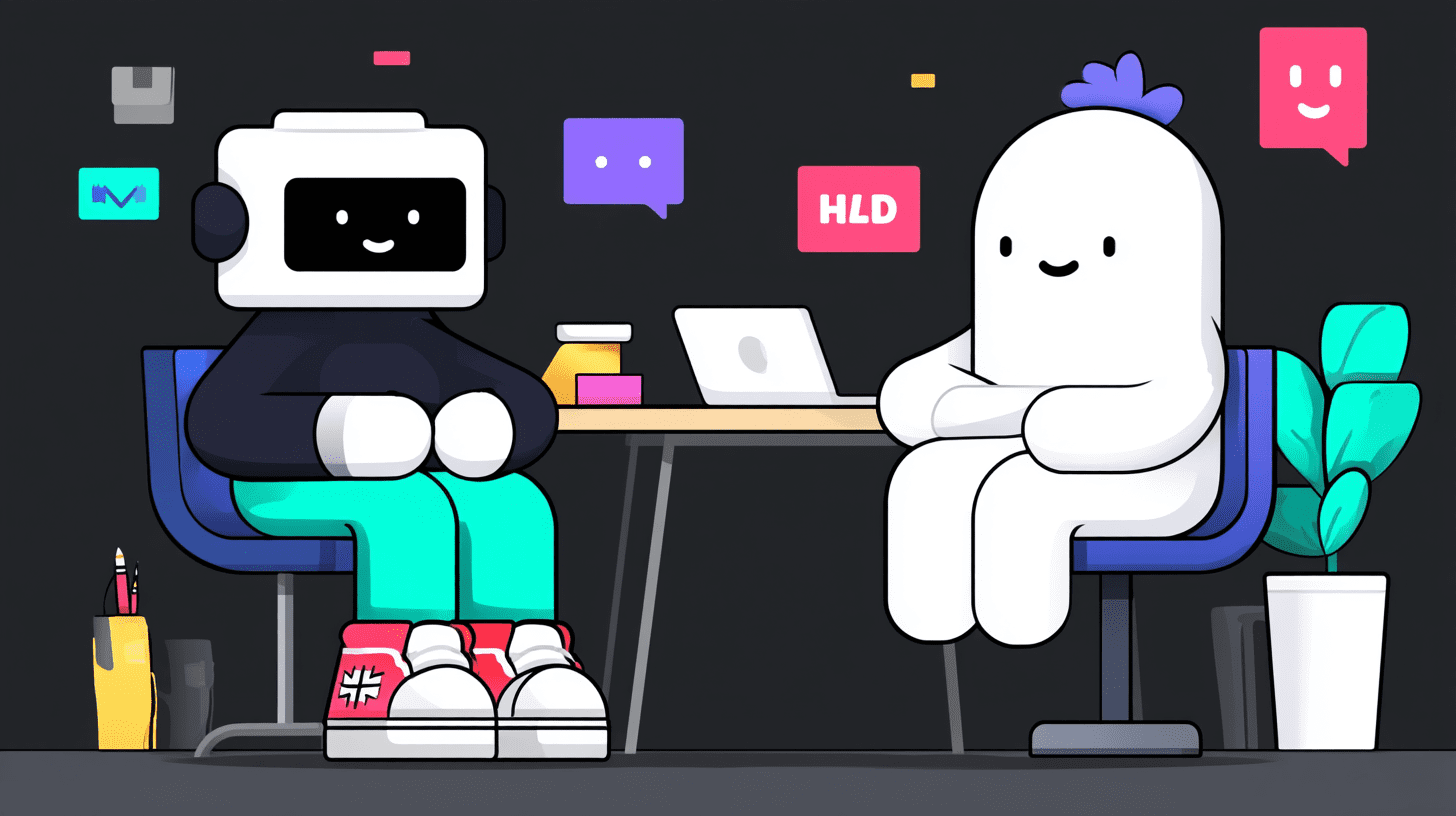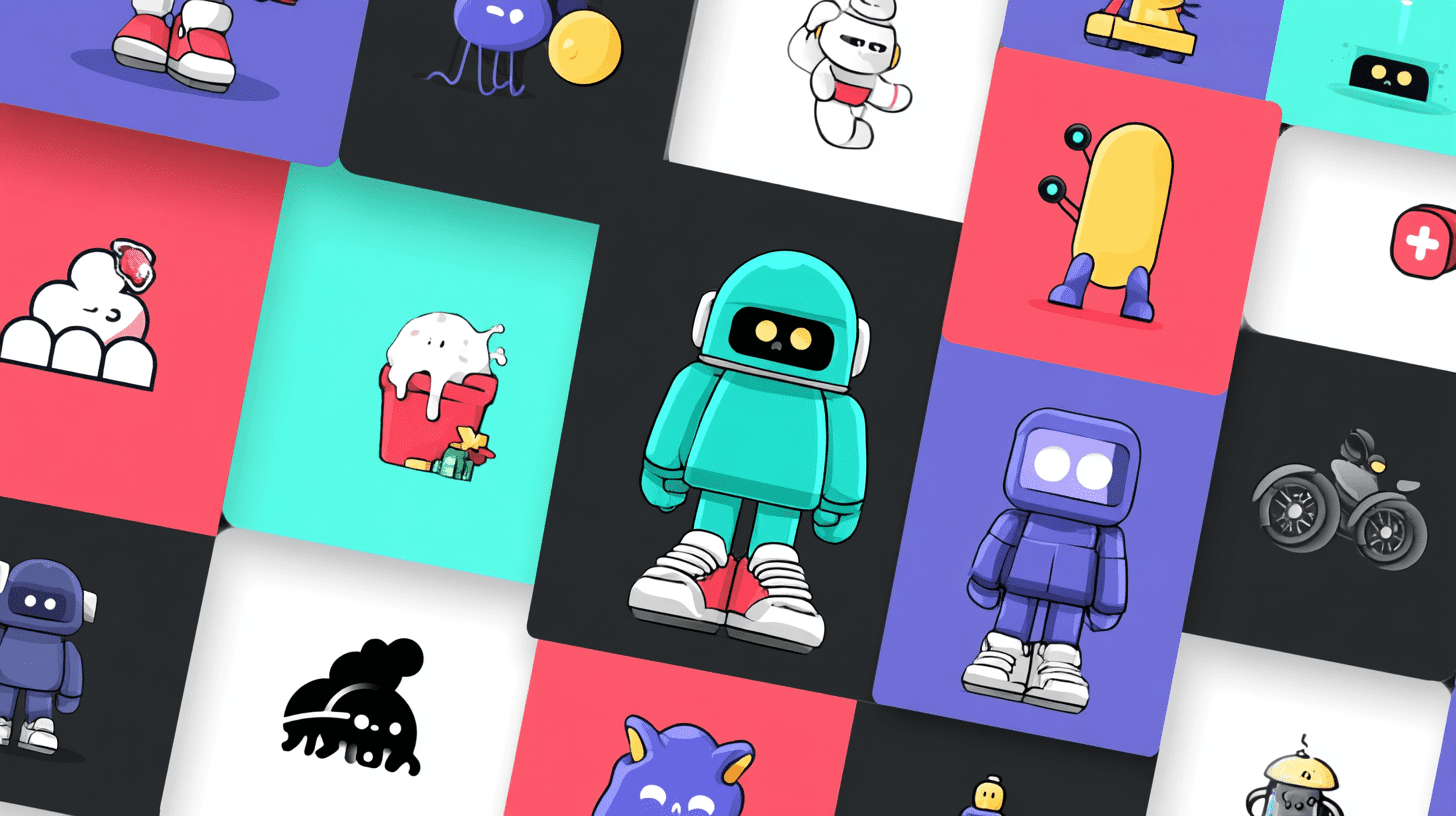I remember the first time I used an AI-powered tool to help me brainstorm new content ideas. It felt like stepping into the future. The process was faster, more organized, and surprisingly fun. Today, I rely on AI for everything from idea generation to final edits. In this post, I’ll share my personal journey with AI as a digital creator and show you how natural language processing (NLP) can make your workflow more efficient, creative, and less stressful. Let’s explore why AI is such a game-changer and how you can use it to enhance every aspect of your content creation process.
Understanding AI in Content Creation
Let me start by breaking down what I mean by AI in content creation. AI, or Artificial Intelligence, is a branch of technology that allows machines to learn, problem-solve, and make decisions—much like humans do, but much faster. It often uses Natural Language Processing (NLP) to understand and produce text in a human-like manner. In other words, it can read and write!
Why does this matter for digital creators like me? Simple: AI can help with tasks that usually take a lot of my time, such as research, editing, and even generating ideas. Instead of searching for hours or staring at a blank screen waiting for inspiration, I can rely on AI to give me a head start. It’s like having a digital assistant who never sleeps.
Whether you’re a blogger, video creator, or social media guru, AI can help you craft eye-catching headlines, plan your editorial calendar, and even optimize content for SEO. It doesn’t replace my creativity; it enhances it by freeing me to focus on the sparkly human parts of content creation—like storytelling and connection. For me, the best part is how accessible AI tools have become. You don’t need a doctorate in computer science; you just need curiosity and a willingness to explore new possibilities.

My First Encounters with AI Tools
I recall the day I first took a leap of faith and let an AI tool rewrite a chunk of my blog post. I was skeptical—could a machine truly capture my voice, my personal flair, and even the playful tone I love so much? To my surprise, it did a pretty good job! Of course, it wasn’t perfect, but it offered suggestions that sped up my writing process.
My early experiences involved using AI-driven grammar checkers and writing assistants. Tools like Grammarly and ProWritingAid were lifesavers, identifying small errors I typically missed. Before AI, I’d spend a lot of time proofreading, which, let’s be honest, isn’t the most thrilling part of being a creator. Now, I can quickly polish my content without getting stuck in that nitpicky editing phase.
Another fascinating AI tool I tried was a headline generator. I simply typed in a few keywords like “digital creators” and “AI,” and out popped multiple headline ideas—some good, some funny, and some plain weird, but they definitely sparked new directions for my content. Seeing AI in action made me curious about what else was possible. As I dug deeper, I realized these tools weren’t just gimmicks; they were practical solutions for common content creation challenges. Looking back, I’m amazed at how these first encounters shaped my current workflow. Little did I know that I was only scratching the surface of AI’s capabilities.
Streamlining Research and Brainstorming
One of my favorite perks of using AI is how it streamlines my research process. I often find myself juggling multiple browser tabs, searching for facts, references, and stats. By the time I gather everything I need, my mind feels cluttered. With AI-driven research assistants, though, I can type a question or topic, and the tool quickly scans countless articles to give me summarized findings or relevant resources. It’s like hiring a super-speedy researcher who never complains about deadlines!
When it comes to brainstorming, AI can be a real goldmine. NLP algorithms can sift through keywords, trends, and user interests to generate a curated list of fresh ideas. Let’s say I’m planning to create a series about “content creation workflows.” AI can pinpoint popular subtopics—like “repurposing content” or “managing multiple platforms”—based on user search data or popular social media discussions. This approach helps me focus on what my readers genuinely care about.
I love that this technology speeds up a sometimes tedious step. Rather than sorting through endless data manually, I get the big picture right away. From there, I can add my personal stories and experiences to give the content that human touch. If you’ve ever felt stuck or overwhelmed during the research stage, I highly recommend giving AI tools a shot. You’ll spend less time hunting for information and more time molding it into something unique and fun to read.
Crafting Attention-Grabbing Headlines
Ever spent too long trying to craft the perfect headline? I definitely have. Headlines matter a lot because they decide whether people click to read more or keep scrolling. Thanks to AI, generating attention-grabbing headlines is now quick and painless.
I usually start by giving the AI tool my working title or a brief description of my article. For instance, if my article is about “using AI for digital creation,” the tool might suggest titles like “Revolutionize Your Content with AI” or “How AI Made Me a Better Creator.” Sometimes it’s spot-on, other times it’s a bit off the mark. But that’s the beauty of AI—it doesn’t get offended if I reject certain suggestions. It just keeps giving me new ones!
For an extra boost, I mix AI’s suggestions with my own flair. I might take an AI-generated headline and add a personal twist: “AI Changed the Way I Create—Here’s How It Can Help You Too.” This blend of technology and creativity often yields the best results.
Bold, quirky, or curiosity-driven headlines tend to perform best. Lists, questions, and promises of specific benefits can also help. Just remember to keep it genuine. If the headline promises the moon but the article barely talks about space, readers will be disappointed. AI is great at delivering ideas, but my role is to ensure consistency between the title and the actual content. With the right mix of AI support and human touch, you’ll have headlines people can’t ignore.
Generating Engaging Written Content
Now, let’s talk about the holy grail of AI for digital creators: writing assistance. I love writing, but there are moments when I get stuck. AI writing tools, many of which rely on NLP, can help me break through that initial block. I type a short prompt or outline, and the AI expands it into paragraphs of text. While I always review and tweak the AI’s output (to keep my voice consistent), it’s a wonderful head start.
One tip I’ve learned is to guide the AI with a clear style. For example, if I want a playful, casual tone, I might say, “Write a fun, conversational introduction about why AI is cool for digital creators.” The more specific my instructions, the better the results. AI can also help with rewriting sentences that feel awkward or repetitive, ensuring my content flows smoothly from one idea to the next.
Still, I keep a close eye on the details. Sometimes the AI might make up facts or references (often called “hallucinations”). Fact-checking is crucial—AI is a helper, not a complete replacement for human knowledge. But when used wisely, these AI writing assistants can speed up the creative process and save me from dreaded writer’s block.
If you’re just starting out, many AI writing tools come with free trials. Experiment a bit, see what fits your style, and don’t be afraid to keep parts you like while discarding the rest. In the end, it’s still your story—AI just gives you an extra pair of hands.
Visual Creation and AI
Words aren’t everything. Sometimes we need striking visuals to bring our content to life—be it a blog post header image, an infographic, or social media graphics. AI can help there, too. I’ve experimented with AI-powered design platforms like Canva’s Magic tools, and they’re a huge time-saver. If I provide a rough design concept, AI can arrange colors, fonts, and graphics that match my brief. That means less time fussing over layout and more time focusing on the message.
Then there’s the mind-boggling world of text-to-image AI. I type a description—something like “A robot painting a sunset”—and watch the AI create unique art. While the results aren’t always perfect, they can be surprisingly detailed. This is great when I need a custom piece of art that stands out. If I don’t like the first attempt, I simply refine my prompt until the AI delivers something I can proudly use.
AI tools can also assist in editing and enhancing existing photos. They adjust lighting, remove backgrounds, or even apply artistic effects in one click. For me, it’s another way to keep my workflow smooth. Instead of messing with complicated design software, I rely on these AI features for quick fixes.
Just like with text, though, the final product needs my human touch. Maybe I change the color scheme or reposition an element to fit my brand. The power of AI is in speeding up the process, but I still make the creative decisions that give my visuals personality.

Audio and Video Enhancements
In our content-rich world, audio and video have become super important, too. I remember when I first tried editing a video on my own. It felt like learning a new language—so many timelines, layers, and transitions. AI video editing tools changed that. Now, I can upload raw footage, and the AI will automatically create smooth transitions, filter out shaky shots, or even add subtitles based on speech recognition.
When it comes to audio, AI’s NLP skills really shine. Let’s say I have a podcast or a voiceover track. AI-driven transcription tools can quickly convert that audio into text. This is a lifesaver if I want to repurpose a podcast episode into a blog post or social media snippets. Plus, some tools can translate speech into multiple languages, broadening my content’s reach.
I’ve also used AI to clean up audio quality. Background noise and echoes can be distracting, so using AI noise reduction feels like magic. Suddenly my voice sounds crisper, as if I recorded it in a professional studio.
One of my favorite features is automatic caption generation for video. It ensures my content is accessible to a wider audience, including those who can’t watch with the sound on. Though I still review and tweak the captions for accuracy, it’s far less tedious than typing them out manually. With the right AI tools, even complex media projects become more manageable—no advanced video-editing course required.
Collaboration Tools and Project Management
Any digital creator knows that working with a team—or even just juggling multiple personal projects—can be chaotic. That’s where AI-powered collaboration and project management tools step in. I use platforms that integrate AI to suggest timelines, assign tasks, and track progress automatically. If I’m working with other writers, the AI might highlight who’s responsible for which section of the blog post and give reminders when deadlines are coming up.
One cool feature I’ve experienced is AI-based workload balancing. The tool analyzes everyone’s tasks, then suggests who might be free to take on more work and who is overloaded. This kind of automated insight keeps me from piling everything on my busiest collaborators (or accidentally giving myself too much to handle!).
Communication is also easier. Many project management apps have AI-driven chatbots that can answer simple questions or link me to relevant documents. If I’m searching for a particular image file, I just type a quick query like “Project X logo file,” and the bot retrieves it within seconds. It’s a lot faster than hunting through folders.
While these collaboration tools won’t replace human interaction, they’re fantastic for dealing with repetitive tasks. When a project is well organized, I spend more time creating and less time dealing with administrative headaches. For me, that’s a huge win. AI keeps my workflow smooth, my team on the same page, and our final product delivered on time—most of the time, anyway!
Ethical Use of AI
Whenever I talk about AI, I believe it’s important to address ethics. AI can do so many cool things, but it’s still a tool created by humans. That means it comes with biases or potential issues if not used responsibly. For instance, AI text generators might inadvertently promote stereotypes if their training data is skewed. As creators, it’s up to us to stay aware and correct any questionable content the tool might produce.
I’m also mindful of plagiarism concerns. If I’m using an AI writing assistant, I make sure the final content is unique and properly cited. AI can suggest lines, but I don’t want it to just copy someone else’s words. Thankfully, many AI platforms have built-in checks to reduce plagiarism. Still, I do my own due diligence.
Privacy is another topic we can’t ignore. Some AI tools store data in the cloud, which might include confidential information. I avoid sharing any sensitive details with such tools. If I absolutely must, I’ll look for a platform with robust security measures and read its privacy policy carefully.
Lastly, I think about the long-term impact of AI on the job market. Yes, AI automates tasks, but I see it as a partner rather than a replacement. Instead of making humans obsolete, it can free us to focus on what we do best—imagination, empathy, and authentic connection. By keeping ethics in mind, I ensure AI remains a force that benefits everyone.
Forecasting Future Trends
I’ve come a long way since my first experiment with AI tools, and I’m eager to see what’s next. AI is evolving fast, and soon we might see even more advanced content generation. Imagine AI systems that can understand cultural nuances to produce region-specific jokes, or interactive AI that can adapt a story in real-time based on reader feedback. The possibilities feel endless.
In the future, I believe AI will become even more user-friendly. It might integrate seamlessly with our devices, so we hardly notice when we’re interacting with a machine. We’ll have specialized AI for every stage of the content creation process, from idea to distribution. This could mean less time spent on mundane tasks and more time being genuinely creative.
We might also see new regulations and best practices to guide AI usage. As tools become more powerful, so does the need for accountability. While some worry about AI taking over creative jobs, I see a world where human-AI collaboration is the norm. Think of it as a dance: the AI leads with efficiency, and we bring the soul and personality.
The bottom line is that AI isn’t a passing trend. It’s an ever-growing force that’s transforming how we create and share ideas. If we embrace it and learn to use it responsibly, I believe we’ll open doors to creativity and collaboration we can only imagine right now. Honestly, I can’t wait to see what the future holds, and I hope you’ll join me on this exciting ride.
Conclusion
From idea generation to final edits, AI has changed the way I approach digital content creation. It’s allowed me to spend less time bogged down by repetitive tasks and more time focusing on creativity and storytelling. By understanding how AI works—especially its use of NLP—we can make smarter choices and harness it effectively. Whether we’re working on blog posts, videos, or even podcasts, AI can lend a helping hand at every step of the way.
Still, there’s a balance to strike. AI might be brilliant at crunching data or spitballing ideas, but it’s our human touch that ensures authenticity, empathy, and ethical responsibility. As technology moves forward, I see AI becoming an essential (and welcomed) partner for digital creators everywhere. If you’ve been hesitant, I encourage you to give some AI tools a try and see how they can lighten your workload and spark new ideas. The future of AI-driven content creation is bright, and I’m excited to see how we’ll all grow along with it.
FAQ
How do AI tools help me write better content?
AI tools, powered by NLP, can suggest ideas, correct grammar, and even rewrite sections of text. They help speed up your writing process by handling time-consuming tasks like proofreading, idea generation, and organization. However, you still bring the final human touch to make your content unique and relatable.
Is AI going to replace human creators?
No. While AI is excellent at automation and quick data processing, it lacks human creativity and emotional insight. Instead of replacing human creators, AI complements our skills by freeing us from tedious tasks, so we can focus on storytelling and personal connections.
Are AI-generated visuals copyrighted?
This depends on the tool and its license. Some platforms grant users full rights to the visuals they create, while others require attribution or have specific usage rules. Always read the platform’s terms of service to know how you can use AI-generated artwork safely and legally.



